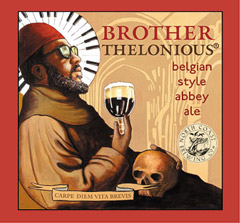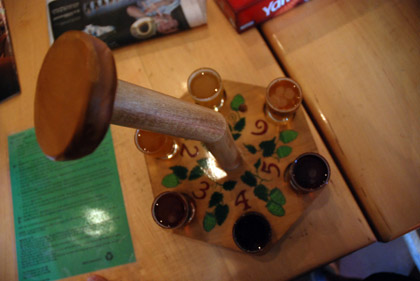So MillerCoors has launched a separate company to manage its portfolio of (existential warning) craft beers and imports, calling it “Tenth and Blake Beer Company.”
Is this different than what America’s megabreweries breweries tried in the mid 1990s? On the surface, but maybe not that different. Will Tenth & Blake prove more successful? We’d be guessing, wouldn’t we? Before you do, consider a bit of history.
1995. “We are behind the curve, no question about it. We need to learn about specialty beer,” Scott Barnum, then general manager of Miller American Specialty Craft Beer Co., told All About Beer magazine. That’s the year that Miller bought a stake in the Celis Brewery and Shipyard Brewing. Leinenkugel and Miller Reserve were the other key brands in the ASCBC portfolio. “We have people in here helping us train our palates and our noses, working with our sensory development. We listen to guys tell us how they built their microbrewing businesses, about investment, capital. We talk to entrepreneurs. We are immersing ourselves in this world.”
Anheuser-Busch formed what it called the Specialty Group of Anheuser-Busch. “We are trying to think differently,” said Jeff Jones, who was senior product manager for the group. “That’s the whole thought process of the specialty beer business. I do have a passion for beer. We have to think differently from a large brewer, and that was the purpose for separating out our group.”
Coors established its own specialty group, Unibev, much earlier than the others, and in 1995 its star was Killian’s. The year before bock, Oktoberfest and wheat beers all flunked various trials. However, Unibev managing director Tex McCarthy said that a new brand, Blue Moon, wouldn’t carry the Coors name. “We want them to be disassociated from the Coors family. . . . If people see a major brewer’s name on a micro it loses some of the cachet that makes the beer interesting to begin with.”
You know the rest. It didn’t happen over night and it didn’t happen because Coors threw a bunch of advertising money behind the brand but Blue Moon Belgian White became the best selling wheat beer in America ever.
1997. Miller remained focused on working with regional partners rather than brewing specialty beers (the Reserve line had been axed by then). “We’ve said before that this is a regional business,” Barnum said. “More and more, you will see people contracting, narrowing their focus.”
That didn’t exactly work out. Miller ended up buying out Pierre Celis and his family and by 2000 had closed the Celis Brewery. Miller sold its stake in Shipyard back to Alan Pugsley and Fred Forsley and that company has thrived.
Forsley explained what happened a few years after he and Pugsley regained full control of their brewery: “I think initially the plan was well conceived, where Miller was focusing on portfolio selling. The whole Miller network was designed so their sales force could come in and sell their whole portfolio of beer. American Specialty Craft Beer had a relationship on the sales side with Molson, the imports, Asahi, and so on. That way a salesman was responsible not only for Shipyard but Molson. They had a variety of resources to pull from. When it changed from being a portfolio sale to a priority sale, as acknowledged by everybody in the organization, the goal became to make Miller’s main brands their focus. That really caused major problems for us. Up until then the sales efforts were working very well.”
A press release from MillerCoors indicates Tenth & Blake “will own the strategic business drivers — marketing, trade marketing and an independent sales organization dedicated to the craft and imports business.” That’s the something different. But it’s not all it takes.
“We didn’t really fit into the Coors distribution system until about five years ago,” Keith Villa, who wrote the recipe for Blue Moon White, said last year when I visited Coors while doing the research for Brewing with Wheat. A sales force is not what made that beer. Many readers here feel obliged to beat up on Blue Moon White, and yes it has became hip, a badge even. But Villa put a beer in the glass that drinkers who are willing to pay more want to drink.
Fifteen years, and more, after the people working at the nation’s largest breweries said they were ready to think like smaller breweries how many successes similar to Blue Moon can you point to? Maybe it’s not a matter of training. Maybe it’s company DNA.
 Or beer and roots music.
Or beer and roots music.